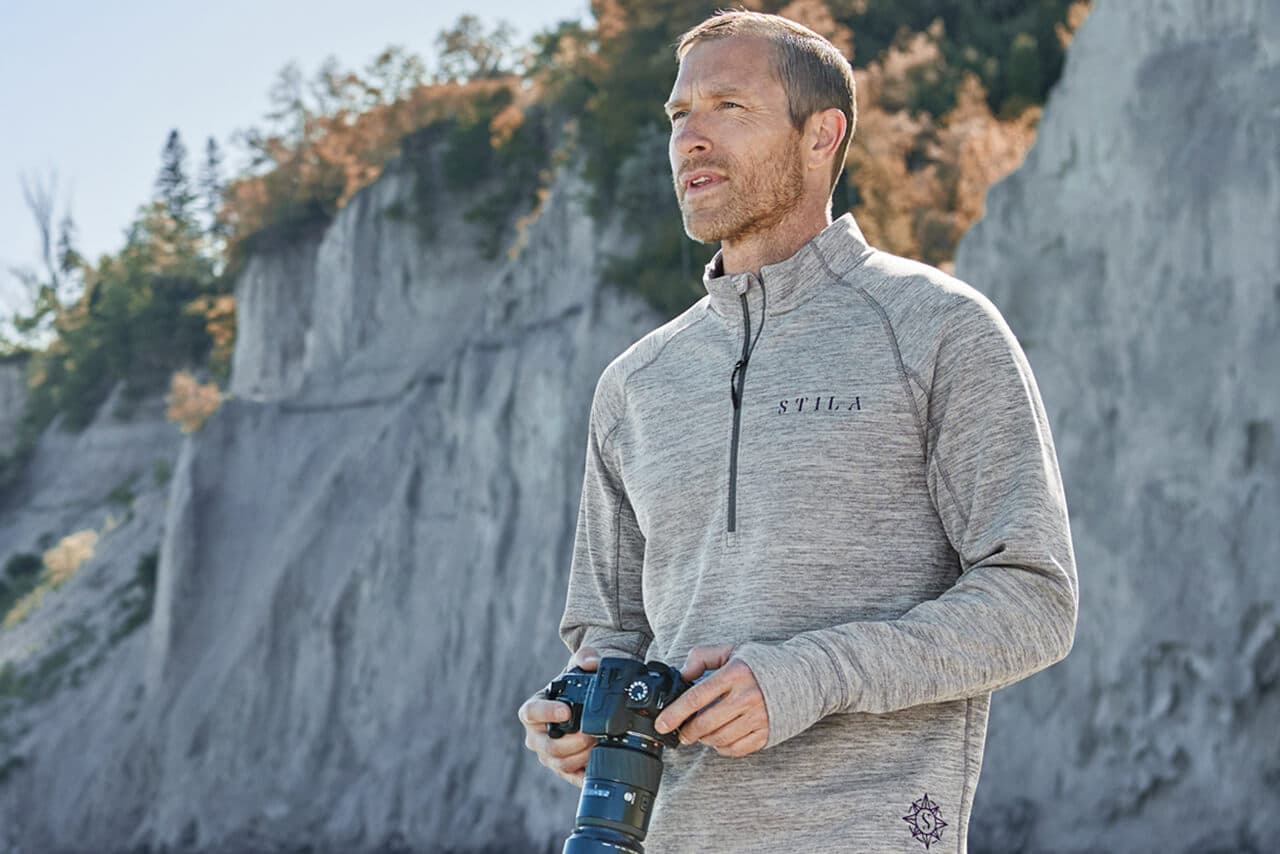Why Branded Clothing Made with Natural Fibers Feels Better
Why Branded Clothing Made with Natural Fibers Feels Better
Blog Article
The Significance of Lasting Garments: Exactly How It Affects the Atmosphere and Your Wardrobe
Lasting garments is significantly acknowledged for its critical role in lessening the environmental effect of the fast garment industry. By concentrating on environment-friendly products and moral manufacturing techniques, it attends to pressing eco-friendly issues. This change not only profits the earth yet additionally influences customer selections, leading to a more thoughtful technique to closet management. Understanding these dynamics elevates vital inquiries regarding style's future and individual duty fit it.
The Environmental Impact of Fast Fashion

Benefits of Sustainable Materials
Sustainable materials use significant advantages, especially through green fabric options that lessen environmental damage. These products additionally demonstrate durability and durability, lowering the requirement for constant substitutes. Consequently, they contribute to an extra lasting garment industry and advertise accountable consumer actions.
Eco-Friendly Fabric Choices
While the style industry has long been linked with fast patterns and environmental harm, the increase of environmentally friendly textile choices provides a transformative chance. Lasting products such as organic cotton, hemp, and Tencel have gained popularity as a result of their lower ecological effect. These materials are usually created without unsafe chemicals and call for less water, decreasing their carbon footprint - Branded Clothing. In addition, lots of green fabrics are eco-friendly, adding to a round economy by minimizing waste. Choosing sustainable materials not just supports environmentally liable methods however likewise advertises much healthier ecosystems. As customers come to be more familiar with their buying power, the need for green textiles encourages brand names to innovate and adopt even more sustainable manufacturing methods, inevitably benefiting the world and future generations
Sturdiness and Long Life Benefits
Numerous consumers are progressively acknowledging the toughness and long life advantages of sustainable materials in their clothing choices. Unlike traditional textiles, lasting materials such as natural cotton, hemp, and recycled polyester are crafted to endure wear and tear, causing garments that last longer. This minimized frequency of substitute not only conserves consumers money with time yet additionally diminishes waste created by rapid style. Furthermore, lasting garments often uses green manufacturing techniques that enhance fabric strength, adding to a decrease in the general carbon impact. By investing in long lasting garments, customers can grow a much more lasting wardrobe while enjoying top quality pieces that keep their visual and functionality gradually. Resilience and durability stand as crucial benefits of choosing sustainable products.
Lowering Waste With Lasting Practices
Decreasing waste in the apparel industry can be accomplished via ingenious techniques such as upcycling and repurposing products. Furthermore, adopting minimalist closet techniques urges customers to prioritize quality over quantity, inevitably decreasing clothing usage. With each other, these approaches add considerably to a much more sustainable clothing design.
Upcycling and Repurposing Products
Upcycling and repurposing materials have arised as innovative techniques in the fashion business, changing disposed of fabrics into beneficial brand-new products. This strategy not just decreases waste but likewise motivates creativity and uniqueness in apparel layout. By taking old garments and materials, designers can produce special pieces that mirror individual style while reducing the demand for new resources. Furthermore, upcycling typically needs less energy and water contrasted to conventional manufacturing processes, greatly lowering the ecological impact of style. As customers end up being much more familiar with sustainability, the popularity of upcycled clothes continues to climb, advertising a circular economic situation. Ultimately, these practices add to an extra lasting future, where style focuses on ecological wellness over rapid production and consumption.

Minimalist Wardrobe Approaches
As individuals significantly seek to reduce their ecological impact, embracing minimal closet methods has actually gained grip as an efficient approach to lasting fashion. These strategies stress quality over amount, encouraging consumers to curate a smaller sized collection of flexible, resilient clothes. By concentrating on timeless pieces that can be combined and matched, individuals can minimize the regularity of acquisitions and eventually reduce waste.Additionally, minimalism promotes mindful usage, prompting buyers to review the ecological and honest implications of their choices. This method not only cultivates a more lasting way of life but also streamlines day-to-day decision-making concerning attire. As individuals welcome minimal concepts, they add to a style society that values sustainability and liable consumerism, inevitably bring about a more eco-conscious society.
The Duty of Moral Labor in Lasting Fashion
While numerous customers are progressively knowledgeable about the environmental effects of their clothing options, the importance of moral labor techniques in lasting fashion can not be overlooked. Moral labor includes reasonable wages, risk-free working conditions, and regard for workers' legal rights, developing the foundation of responsible style production. Brand names that prioritize moral labor not just boost communities however also established a standard for accountability in the industry.Moreover, the combination of moral techniques promotes openness, allowing customers to make enlightened choices concerning their purchases. This method contrasts dramatically with rapid fashion's exploitative labor designs, which commonly focus on earnings over people. By supporting business devoted to moral labor, consumers add to a system that values human dignity along with environmental sustainability. Ethical labor is not simply an add-on; it is important to the wider objective of sustainable style, making certain that the quest for eco-friendliness does not come at the expense of human civil liberties.
The Effect of Lasting Clothing on Carbon Emissions
Lasting clothes has the possible to significantly reduce carbon discharges related to the fashion market. Typical garment manufacturing adds significantly to greenhouse gas emissions, primarily because of energy-intensive production processes and using non-renewable sources. In comparison, lasting style concentrates on eco-friendly materials, such as natural cotton or recycled fibers, which usually require much less energy to produce.Moreover, lasting brand names tend to embrace a lot more effective production methods, reducing waste and decreasing overall discharges. By focusing on durability and timeless style, lasting clothes urges customers to buy much less often, additional minimizing the carbon impact connected with overconsumption.Additionally, several sustainable brands are committed to openness in their supply chains, allowing customers to make educated options that line up with their values. Ultimately, moving in the direction of sustainable garments can bring about a considerable reduction in carbon emissions, adding to a healthier planet and a more sustainable future for the fashion market.
Supporting Neighborhood Economic Climates With Lasting Options
The change towards lasting garments not just addresses ecological Get More Info worries however likewise considerably benefits regional economies. By picking sustainable fashion, consumers typically sustain neighborhood artisans and local business, enhancing area durability. These enterprises generally run on a smaller sized scale, prioritizing craftsmanship and moral methods over mass production.Investing in locally made lasting garments fosters work production and boosts economic growth within neighborhoods. As customers end up being extra knowledgeable about the ecological influence of their purchases, they progressively look for products that show their values. This need motivates regional suppliers to embrace sustainable practices, adding to a circular economy.Moreover, sustaining neighborhood companies decreases transport exhausts, aligning with eco-conscious customer behavior. The interconnectedness of sustainable clothing and local economies underscores the important role that specific selections play in promoting both financial and ecological health and wellness. By promoting these regional connections, communities can grow while also working towards a much more lasting future.
Changing Your Wardrobe: Tips for a Lasting Closet
As people look for to reduce their environmental effect, changing a storage room right into a lasting closet ends up being a crucial action. One effective approach is to examine existing clothing, keeping only things that are worn consistently and that align with sustainability goals. Focusing on quality over quantity is essential; investing in sturdy items from environment-friendly brand names can considerably minimize waste.Additionally, incorporating second-hand products can rejuvenate a closet while decreasing ecological damage. Organizing clothing swaps with friends or contributing extra products can better advertise sustainability.When shopping, people ought to seek materials that are natural, recycled, or eco-friendly, and stay clear of quick fashion retailers - Branded Clothing. Practicing conscious intake by attentively thinking about each acquisition can contribute to a more sustainable way of living. By applying these suggestions, one can develop a wardrobe that mirrors personal style while supporting ecological stewardship
Often Asked Questions
Exactly How Can I Recognize Lasting Clothes Brands?
To determine lasting clothes brand names, one must look into materials used, look for certifications like Fair Trade, and examine the brand name's openness regarding their production procedures, labor methods, and environmental effect, ensuring honest and eco-friendly techniques are focused on.
What Are the Costs Connected With Lasting Style?
The prices connected with sustainable fashion can vary considerably. Higher production costs, moral sourcing, and green products often result in enhanced list prices, which may hinder some consumers while interesting ecologically aware shoppers.
Can Lasting Apparel Be Trendy and Stylish?
Lasting clothes can indeed be fashionable and trendy. Designers increasingly prioritize ingenious products and ethical manufacturing techniques, you can check here confirming that style and sustainability can exist side-by-side. Customers now have diverse alternatives that mix looks with ecological awareness.
Exactly How Does Laundering Clothing Affect Their Sustainability?
Cleaning clothing substantially influences sustainability by consuming water and energy, adding to contamination, and causing microplastic release. Frequent washing can weaken textiles, shortening their lifespan and increasing the demand for substitutes, eventually worsening environmental issues.
What Is the Lifespan of Lasting Clothing Contrasted to Fast Fashion?
The life-span of lasting clothes generally exceeds that of fast style items, commonly long-term numerous years as a result of quality materials and craftsmanship. On the other hand, rapid fashion garments might weaken promptly, necessitating even more frequent substitutes. Lasting apparel is progressively recognized for its crucial role in reducing the environmental impact of the fast fashion sector. While numerous consumers are progressively conscious of the ecological effects of their apparel choices, the relevance of look these up ethical labor methods in lasting fashion can not be forgotten. Branded Clothing. Lasting apparel has the potential to substantially minimize carbon discharges associated with the fashion industry. In contrast, sustainable style concentrates on environment-friendly products, such as organic cotton or recycled fibers, which often need much less power to produce.Moreover, lasting brand names often tend to adopt extra efficient manufacturing methods, decreasing waste and lowering overall exhausts. By focusing on toughness and ageless layout, sustainable apparel urges customers to get much less regularly, further lowering the carbon footprint connected with overconsumption.Additionally, many lasting brands are committed to transparency in their supply chains, enabling consumers to make educated choices that line up with their worths
Report this page